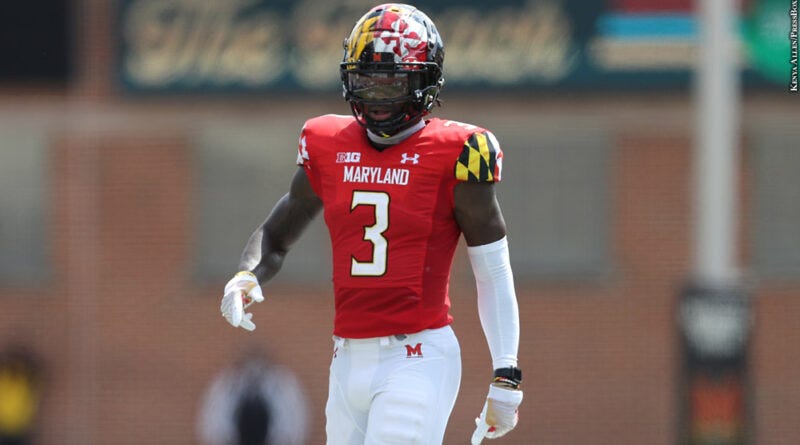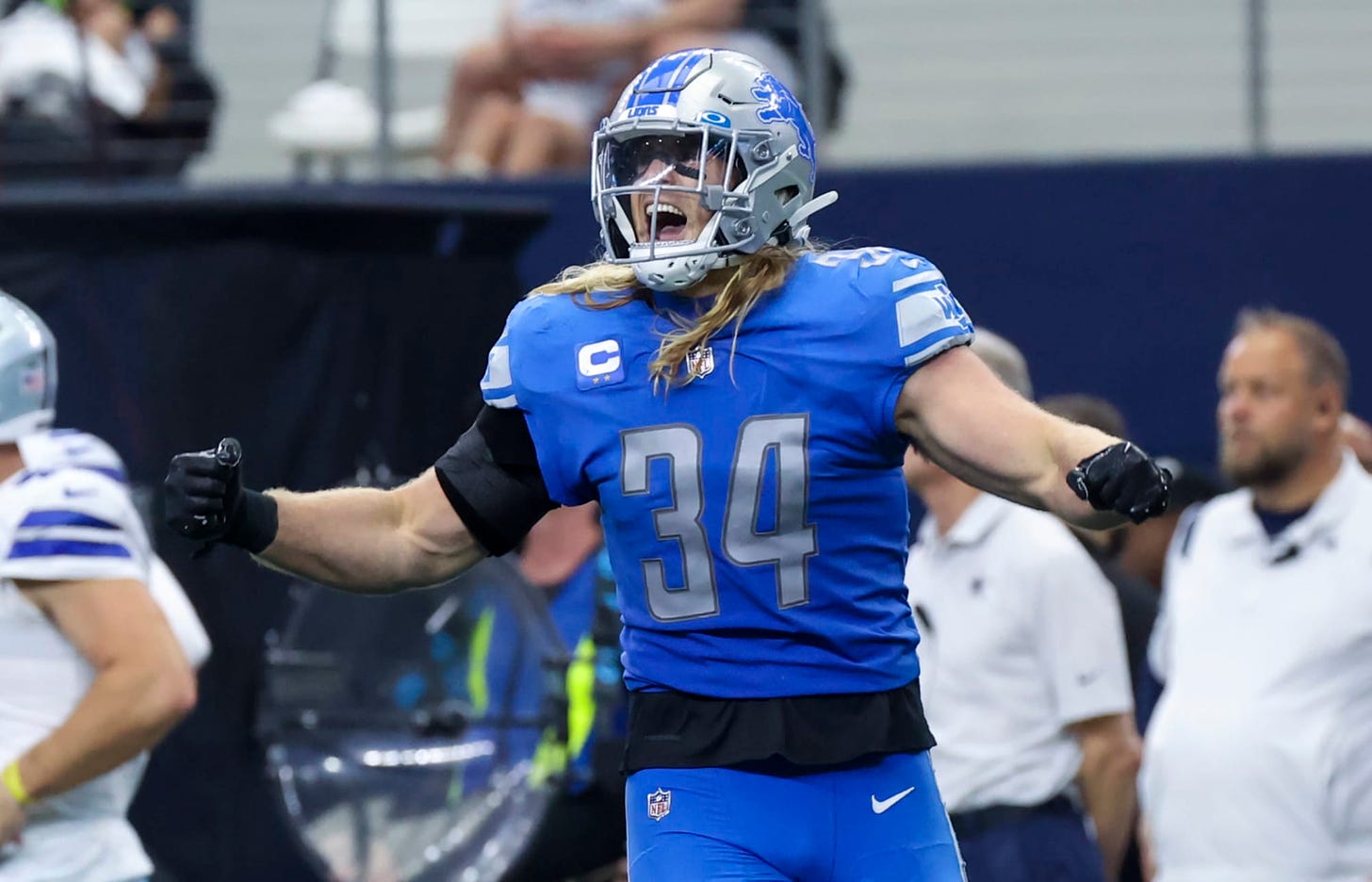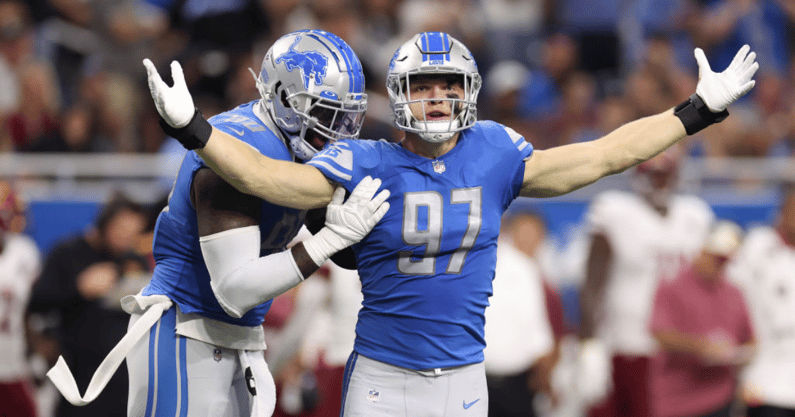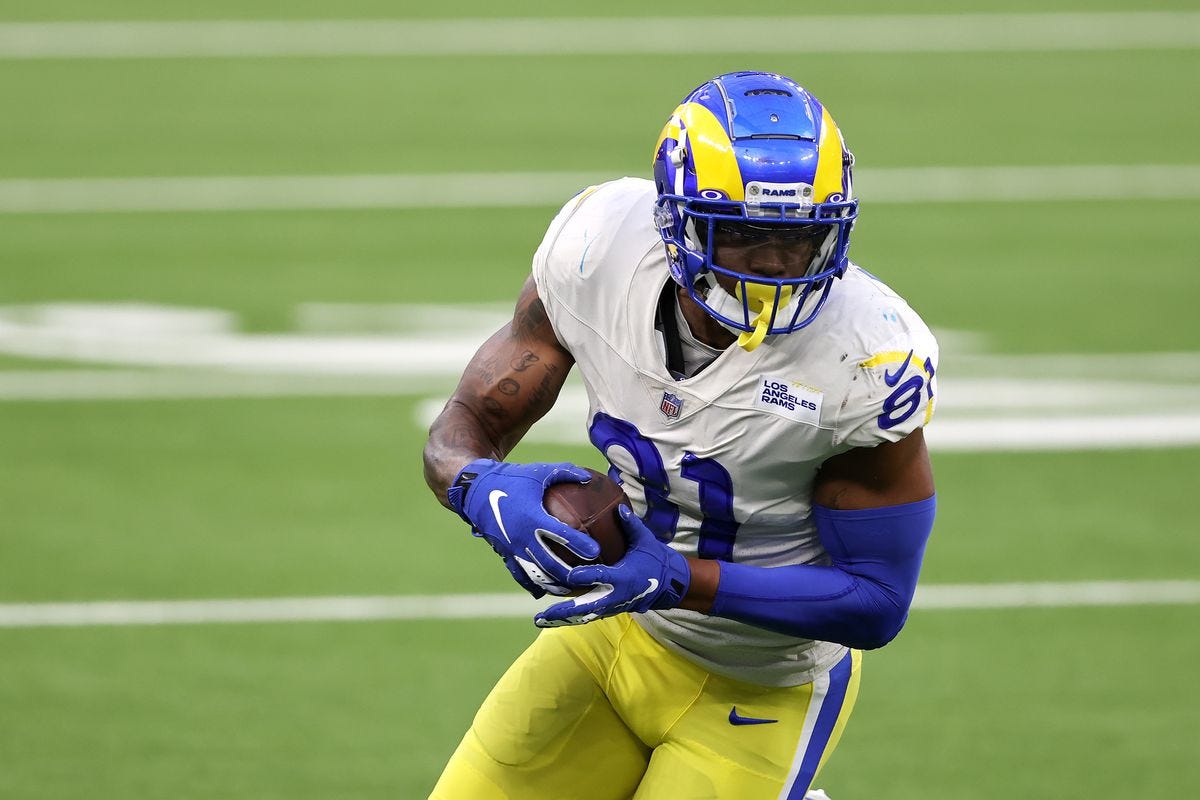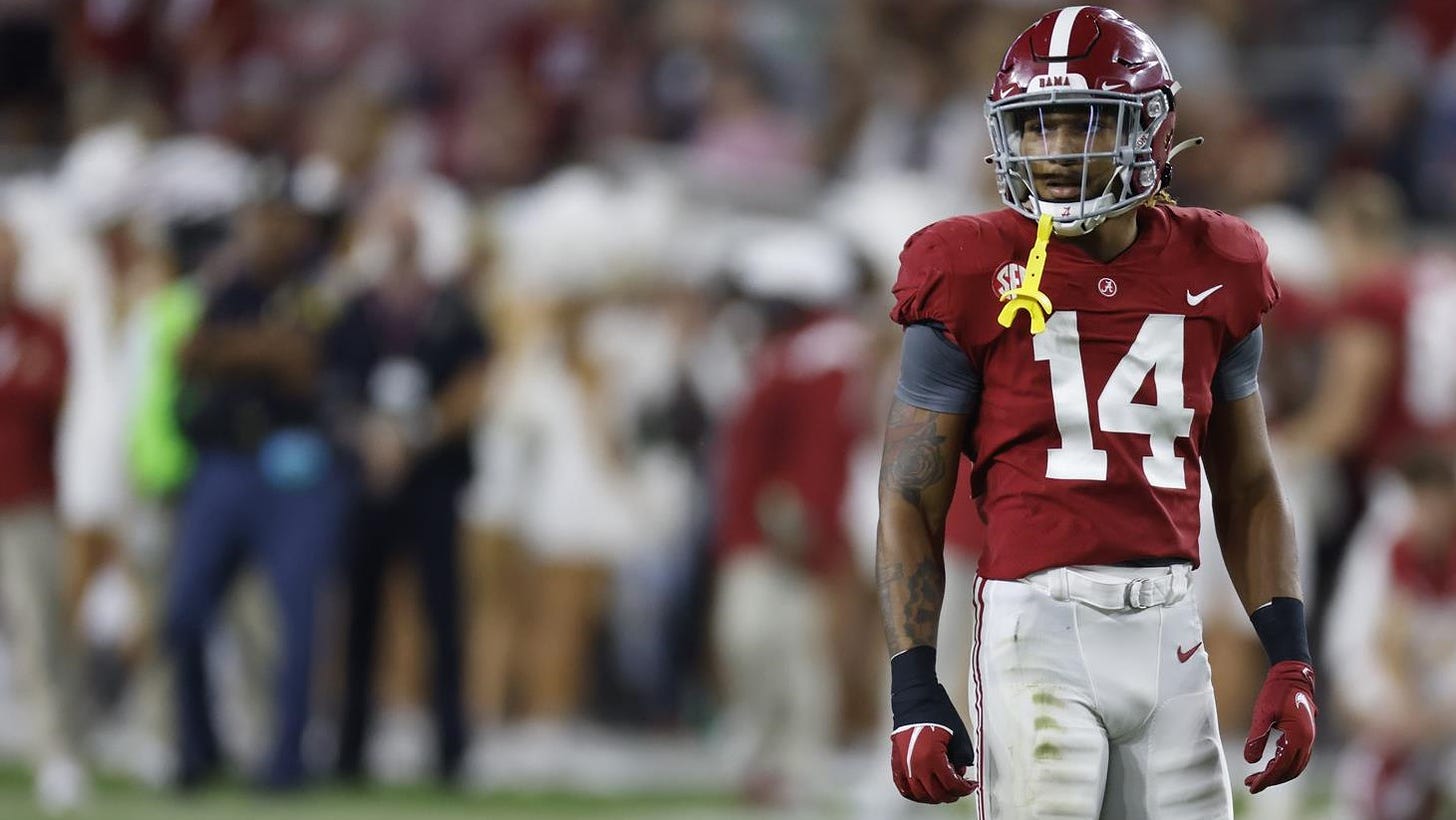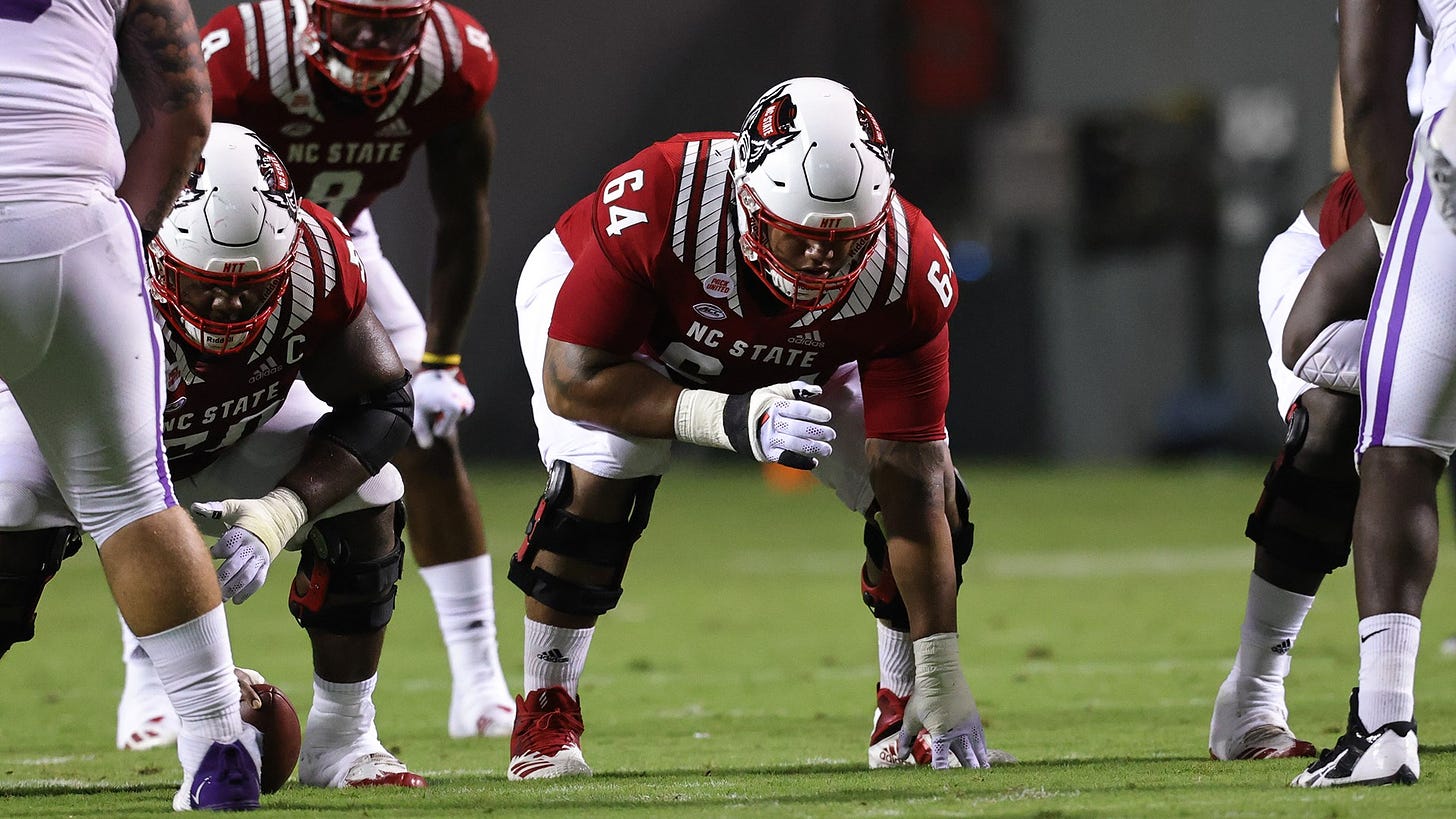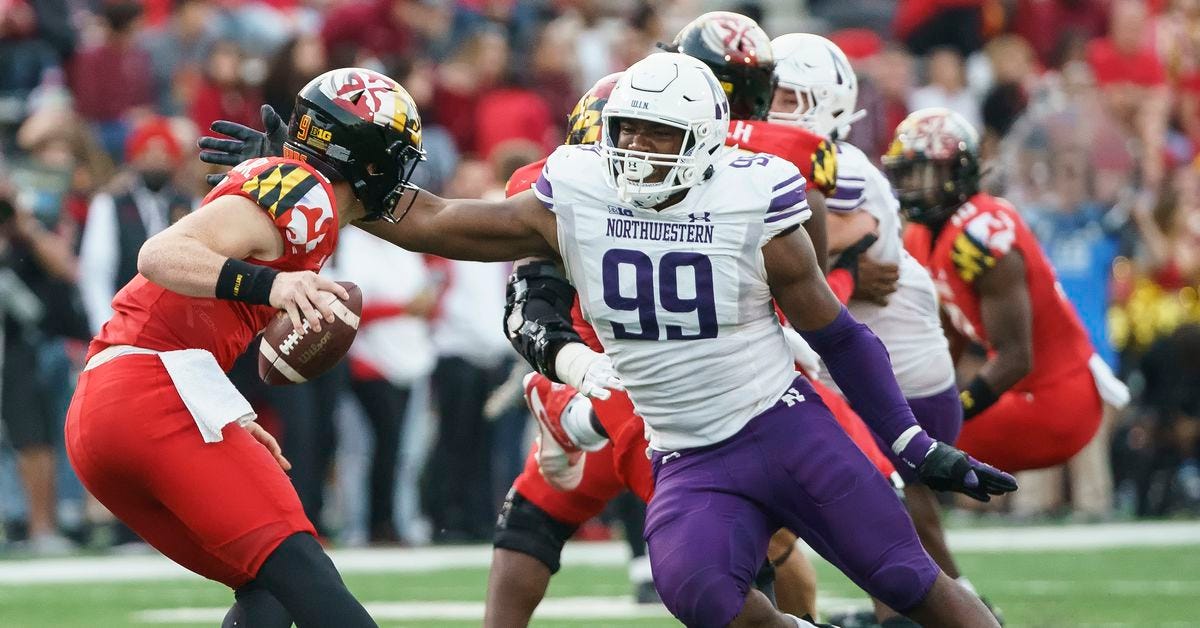Testing Tendencies: Evaluating Holmes' Use of Combine Data
Taking a brief look at some noteworthy athletic testing trends for Brad Holmes in just two full offseasons as the Lions general manager to see what we can glean.
Taking a dive into the Combine testing for some of the players Brad Holmes has drafted already during his time in Detroit. This is not meant to qualify or disqualify anyone in particular, as most teams have a higher emphasis on film than athletic testing. But it would hard to ignore that there are heavy correlations between testing, draft position, and NFL success. So we do take a few minutes to factor it in.
Which Metrics and Data Points Seem to Matter?
Now, we are using the Relative Athletic Score system and database here to help paint a historical picture of where certain players rank in their testing.
10-Yard Splits
Quoting here from FantasyPro’s Andrew Erickson who already noted this trend:
In 2021, Onwuzurike (76th percentile), McNeil (83rd percentile), and Ifeatu Melifonwu (92nd percentile) all posted strong 10-yard splits in testing. In 2022, all of the Lions’ draft picks that tested ran a 10-yard split in the 70th percentile or better.
And that is largely true. Nearly every single player who ran at the Combine that the Lions drafted measured in that 70th+ percentile. The only outliers? LB Derrick Darnes ranked in just the 29th percentile and WR Amon-Ra St. Brown ranked in the 32nd percentile. This one even extends out to a handful of the bigger name signings the Lions have brought in, as CB Cam Sutton (74th), WR Tyrell Williams (96th) CB Emmanuel Moseley (96th), S Chauncey Gardner-Johnson (77th), WR DJ Chark (97th) and LB Alex Anzalone (91st) all hit that mark as well. David Montgomery (57th) is really the lone outlier amongst signature additions here.
Very high correlation here.
40-Yard Dash
This one naturally makes sense in connection to the 10-yard splits, as it would only be natural for someone who starts their run off very fast to tend to finish with a pretty fast time as well. The higher correlation exists on the 10-Yard splits as a whole, with just WR Amon-Ra St. Brown and RB Jermar Jefferson coming in below the 70th percentile as speedsters.
As a general note, the type of athletes that Holmes targets are fast and explosive, and Jermar Jefferson is the outlier in almost every example. Very surprising he was added honestly.
Broad Jump
Another one like the ten-yard split, where the Lions have a large degree of drafted players landing in the upper tiers of the broad jump. For example, every member of the 2021 draft class except RB Jermar Jefferson tested above the 73rd percentile in the broad jump, and the same is true for the 2022 draft class, with just EDGE Aidan Hutchinson tallying at literally 73.0 percentile.
This one clearly correlates, and with a very specific metric to look for (7.30 or higher on RAS). Though do note, you can reasonably go a bit below this. So as a rough projection, if you are scrolling through RAS and find someone who grades 70th percentile or higher here, take note!
Vertical
Another one that matches up quite well is a player’s measured vertical jump. Amongst the players the Lions have drafted there, only a few measure in below the 70th percentile in testing. Those players are OT Penei Sewell (57th) and RB Jermar Jefferson (21st).
Between the Vertical Jump and Broad Jump, these effectively measure a player’s explosiveness, how quickly and forcefully they can explode out of these stances. Brad Holmes has a clear prioritization on these testing traits amongst the players he’s currently grabbed.
Position Specifics Testing Notes
This is incorporating some data from the players brought in by Brad Holmes and Les Snead to LAR, and effectively using it if it still aligns with what DET has done so far under Brad Holmes.
EDGE Rusher Overall Athleticism
One spot where the total RAS score does speak volumes is EDGE rusher. Holmes has gone after almost exclusively elite athletes at the pass rushing positions. Literally, the lowest RAS score for an edge rusher not taken in the seventh round is a 9.20. That’s spanning a timeframe of 2013 through 2022, the time when Holmes was either the Rams Director of College Scouting and the Lions General Manager.
Additionally, the most consistent metrics there are the explosiveness indicators, the broad jump and the vertical jump.
There are several lower end athletes drafted at the position, such as Michael Sam out of Missouri, but those players were all added in the actual seventh-round, meaning there’s a pretty clear bar to cross to be picked on at least Day 1, Day 2, and the first half at least of Day 3 (fourth and fifth rounds).
Safety & Running Back Weight
This is a very simple one: almost all the safeties Brad Holmes has added from 2013-2022 have been above 200 pounds on the scale. C.B. Bryant (2014) did weigh in at 198 pounds, but of note, that was at a very compact frame of 5-9, 198 pounds overall.
With Holmes’ scouting emphasis on sound tacklers, this one makes sense, as he tends to go for guys with a more compact build that can handle coming up and making tackles in the run game, and that is much harder to do when you are weighing in sub-200 pounds.
Running Backs fit this mold as well, though the magic number there is 205 pounds plus. Similarly, this is also correlated to the type of player Holmes has gone after, which is for downhill runners, usually prefer dudes who finish their runs with physicality. Again, harder to do that when you weigh below the magic number there.
Unique TE Measurements & Testing
Tight End is arguably the most tightly grouped one of all the positions out there. There’s a very specific mold that forms here. From a size perspective, you’re looking at a lot of dudes measuring in at either 6-3 or 6-4, and weighing from 239 pounds to 249 pounds. Every single Lions and Rams tight end drafted under Holmes except the tall Tyler Higbee fits that range, though priority UDFA tight end Brock Wright weighed above it at 257 pounds himself. But again, that’s a UDFA, not a player Holmes felt warranted a draft pick.
From a testing standpoint, this one also has a very threshold for athleticism, with the lowest RAS being a 6.98 (Temarrick Hemingway 2016), and a majority of them coming in the upper 8.0-9.0+ range. In short elite athletes all around, and there’s a very high emphasis on speed specifically. Hemingway was both the lowest tight end athletically and also the slowest, with all the others running in the low 4.6 range.
Again, this one fits a scouting mold, as Holmes likes athletic players who can separate and cause issues for defense as pass catchers. So players who have the speed to threaten vertically are desirable.
What Can That Tell Us for the 2023 NFL Draft?
This is always the question we have to be trying to answer. How do the previous moves help us project what moves will come? Now, this is not to say that Combine testing alone determines a player’s value. Far, far from it. However, NFL teams clearly have shown that they use Combine data to help evaluate prospects, sifting through hundreds of players, and using it to confirm what they are seeing on film.
Thus, we do actually want to try and apply these metrics in evaluating who the Lions might be targeting to the extent that the data forms a baseline. Again quoting from Erickson on one portion, the 10-yard splits section:
Some of the top testers in the 10-yard split from this year’s class that Detroit could target include DL Calijah Kancey, DL Bryan Breese, WR Josh Downs, WR Nathaniel Dell, WR Rashee Rice, WR Michael Wilson, TE Luke Musgrave, TE Zack Kuntz, RB Devon Achane, CB D.J. Turner and CB Jaylon Jones.
Another candidate to watch with this testing metric in mind is Alabama safety Brian Branch. While Branch’s overall RAS profile was fairly average, just a 5.25 overall, he does actually grade out quite well in the two areas that Holmes seems to prioritize, which are the 10-yard split and his broad jump. Branch comes in in the 83rd percentile in the broad jump and 86th percentile in the 10-yard split. This is a great example of why specific Combine data can be useful, as one may be tempted to look at Branch’s overall uninspiring final number and dismiss him, without realizing that the spots that Holmes has seemingly prioritized the most are the spots Branch specifically excelled.
Looking at a few others who stick out a little more weighted against these numbers are the following…
Maryland cornerback Deonte Banks, who tested in at #2 all-time for cornerbacks in total RAS. He posted 99th percentile grades in both the vertical jump and broad jump, and was 97th in the 40-yard dash, and 99th in his 10-yard split. I’m genuinely thinking there’s a very good chance Banks is CB1 on Brad Holmes’ draft board.
Illinois safety Sydney Brown is another athletic qualifier to look at, with elite marks for all four indicators, with a 98th percentile 10-yard split. His biggest hit is his height, coming in at 5-9, but again, Holmes like compact frames, and at 5-9, 211 pounds, that’s a great way to describe Brown.
NC State guard Chandler Zavala, he comes in in the 96th percentile in vertical jump, and then 92nd percentile in the 10-yard splits. CBS’ Josh Edwards linked Zavala to the Lions at 3.81 in his latest mock draft. A very appropriate position and pairing given that the Lions have publicly shown interest in the Wolfpack guard.
Utah guard Braeden Daniels is another guy who hits each athletic marker with ease, and could make sense as a developmental guard for the Lions.
Pitt running back Israel Abanikanda checks the measurements in all four of the correlated categories himself, coming in in the 92nd percentile or better. Same deal for Northwestern’s Evan Hull, who comes in 85th percentile or better in each, with a 94th percentile 10-yard split.
A lot of the tight ends check all four boxes, such as Iowa’s Sam LaPorta, Michigan’s Luke Schoonmaker, South Dakota St.’s Tucker Kraft, and Oregon State’s Luke Musgrave. Darnell Washington checks three of the four, with a bad vertical jump weighing him down.
Clemson linebacker Trenton Simpson checks in with a 99.8th percentile 10-yard split for linebackers, and is 99th in 40-yard dash and 98th in vertical. His broad jump is just on the cusp of qualifying, coming in at 68.9th percentile.
Northwestern lineman Adetomiwa Adebawore, who is 99.7th percentile or better in each of those four categories. I don’t think he slides to the Lions in the second-round, but I would imagine Holmes has difficulty passing if he does. Wisconsin tackle Keeanu Benton will actually be a very interesting evaluation case, as he grades just narrowly below in two of the four categories, but is otherwise pretty close to hitting the mark there.
Notre Dame edge Isaiah Foskey qualifies with all four, and with three of them coming in at 92nd percentile or better. Same goes for Iowa State’s Will McDonald, Missouri’s Isaiah McGuire and Auburn’s Derrick Hall.
Again, this is not to qualify or disqualify any particular players, but rather shed some light on how the testing might push Holmes towards an extended look at a few of these players.




